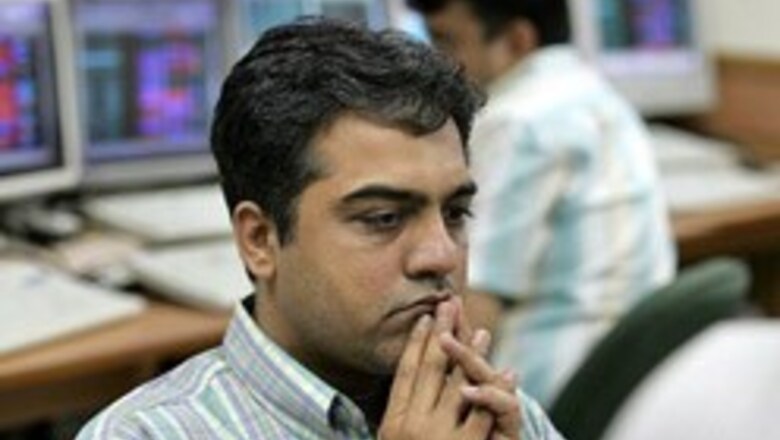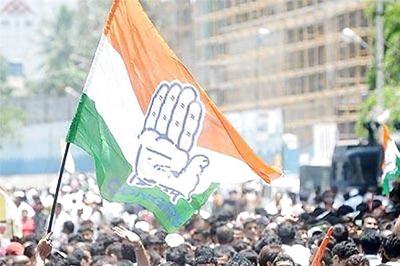
views
Mumbai: Investing in stock markets is a risky proposition, but the same can be quite rewarding too. Investors, since time immemorial, have been trying to discover the hidden gems to make their millions.
In the process, however, they keep making some basic mistakes and continue to lose money over and over again. But if you learn from experience and not repeat the same mistakes, you can surely improve the chances of making money from the fickle equity market.
Hoping and prayingAt first instance, it may seem odd that one should not be hopeful. But factually speaking, there is no room for hope in the stock markets. It is an uncertain world out there and you must be prepared for all eventualities.
It is hope that makes us hold on to bad investments. Many times we make a wrong choice. However, we are emotional about booking a loss. So we hope that we would at least recover our purchase price. And in this fond hope, our losses keep increasing and one fine day, we find ourselves holding a worthless piece of paper.
Hence it is important to be brutal with investments. Fix a stop loss percent. Lets say 10 per cent. As soon as your stock touches the stop loss limit, don’t hope for a bounce back. Get out fast. If you make small losses, you are ready to fight another battle. But make a big loss and you are gone forever.
Making money is not just about making the right choices, but also getting out of the wrong ones IN TIME.
Cheaper the betterPeople often confuse price with value. And this remains one of the biggest reasons of not making money in the stock market.
Logically yes. Stock of Company A which has a value of Rs 25 has a higher probability of doubling to Rs 50 in a short period of time, whereas Company B stock at Rs 500 will most likely take much more time to do so.
Secondly, with Rs 10,000 to invest, we would get more shares of Company A than Company B that is 400 vis-à-vis only 20. So, there’s a natural tendency to buy stock of Company A, as Re.1 movement will give a profit of Rs 400 in Company A and Rs 20 in Company B.
However, the opposite is also equally true. It will be very easy for the Rs 25 stock to fall to Rs 12.50, should the markets crash. But it will be difficult for Company B to fall to Rs 250. Secondly with Company B, having better fundamentals it will bounce back, but Company A may never.
PAGE_BREAK
People fail to appreciate that low price would generally mean poor fundamentals that is, poor value. Also, it would be difficult to get out of such a stock – both because it is a poor stock and secondly you have more number of shares to offload. The probability of writing-off the Rs 10,000 is higher for Company A. So it is best prevented.
Moreover, such stocks are usually prevented by mutual funds, FIIs and other informed investors. And these are the people, who with their big money bags can move the markets. If they aren’t investing in such stocks, why should you?
High PE means overpriced stocksPE (profit equity) ratio is one of the most commonly used, but also the least understood financial number.
Logically speaking, a low PE stock looks undervalued vis-à-vis a high PE stock. But this is only half the story. A PE could be low not because it is under-valued but because the company’s business does not show any future potential. Hence, one may not see any earnings growth from such a company. As against this, there is a company in a sunrise industry, which is expected to show high earnings growth in the future. Therefore, if such a company enjoys high PE, it still makes a worthwhile investment.
It is for this reason of growth that market leaders within an industry enjoy higher PE compared to run-of-the-mill companies.
Haphazard investingMost investors do not work to a well laid out plan. They think of investing if and when they are left with some surplus. There’s no discipline, there’s no objective, there’s no proper asset allocation and there’s no proper risk appreciation.
This lack of discipline is compounded by a casual approach. Instead of doing their own study, instead of understanding the plan, people take the easy route – invest on someone’s recommendations.
If someone expects to make money with such an approach, then one must say that this hope is totally misplaced.
Expecting mangoes in winterMany people go about asking for advice on stocks, which will give ‘maximum’ returns or 30 per cent to 40 per cent returns.
Most investors, after buying a share, will look at prices every day and see whether it has doubled. They're looking at 100 per cent returns in one day.
And when that does not happen, they feel disappointed.
These kinds of unrealistic and arbitrary expectations, which have no link to the realities of the market, bring worst grief to investors. They take unusually aggressive risks. They get influenced by the hype and get into wrong investments – investments which are either a fraud or which don’t match their risk profile.
You cannot expect to grow mangoes in winter. If you do, you are sure to lose your crop. Similarly, there is a need to align your investments with market realities.
Historically, it is seen that money is not made by finding the ten-baggers but ‘by not investing in the wrong ones’. Therefore, as intelligent investors, learn and implement these lessons in your day-to-day investing.
(The author, Sanjay Matai, is an investment advisor.)




















Comments
0 comment